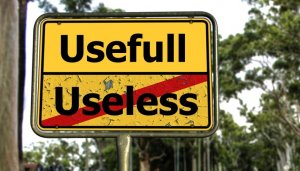This is good for all those concerned about efficiency in schools.
If you are a teacher or a head teacher or an owner of a school or institute, you already know how difficult it is to manage a school, especially staffing. During the MTN Business Training for SMEs in Mbarara, one of the participants requested for guidance on how to manage a school, especially, the ideal number of teachers to have.
The participant, the Chairman and Founder of a secondary school in Mbarara, gave the following statistics:
School population: 1,300 pupils
Number of classes: Ordinary and Advanced levels. O level has four classes and A level has two.
The school has a boarding section, with about 420 students.
Number of administration staff: 38
Number of teaching/ academic staff: 50.
Total school revenue: Ugx. 2.2 billion
Total costs: 2.1 billion.
You don’t have to be an accountant to see the problems in this school. It has a high operational gearing – high cost structure. At 95.4% cost margin, it is excessive. It is an indication of so many problems. You cannot grow your school without retaining at least 25% as profits. For any school, the revenues are clear and easy to account for.
The biggest challenge is over spending outside the budget or in unnecessary items. Most of the frauds I’ve encountered while investigating frauds in a school have been due to lack of value for money, ghost employees, high spending due to unclear budgets and too much power by one staff, usually the head of the school. Most board members of a school rarely understand the details. They keep making decisions based on ‘high’ level information which does not give a clear picture of the real problems in the school. In the long run, the school performance suffers as a lot of money is wasted in administration expenses and staff costs.
There must be revenue leakages somewhere which needs an urgent fix.
The starting point to fix the above problem would be an independent business review or assessment, commonly abbreviated as IBR. This is something more than a due diligence, where an expert reviews the critical business processes and systems using this guide to assess the soundness of the business.
With that knowledge, you need to fix the organizational structure issues, especially appropriate staffing. In many cases, high staff and administration costs account for over 50% of the school costs.
The first area of focus is on addressing staffing issues. In many schools I have interacted with, over staffing is a big challenge.
In Uganda, like elsewhere, you need to undertake a careful analysis of teaching staff work load to assess the extent some teachers might be underutilized. You may need to assess their allocated lessons in the previous year against the minimum recommended lessons by the Uganda National Curriculum Development Center (UNCDC) and Ministry of Education and Sports of Uganda (MoES). Available information at the MoES recommends the following minimum work load for full time teachers and administrators as follows:
| Type of teacher | Minimum lessons (40 minutes each) per week | Maximum lessons (40 minutes each) per week | Comment |
| Full time teacher – FT | 18 lessons | 24 lessons | Analyse to confirm whether all the teachers have adequate lessons as per the recommended ranges |
| Administrative staff – Head teacher | 6 lessons | 10 lessons | At your school, are administrative [academic] staffs given adequate workload? This is usually a case of fraud. |
| Administrative staff – deputy head teacher and Director of Studies | 10 lessons | 18 lessons | How many people are in your structure? Do you have unnecessary staff? In many schools, there is over staffing. |
Next, you need to compute the work load available in your school based on the maximum recommended work-load (in lessons) by the UNCDC.
| Classes/ subjects | S1 | S. 2 | S. 3 | S.4 | S.5 Arts | S.5 Science | S.6 Arts | S. 6 Science | Total Workload | Teachers required | Actual teachers |
| Chemistry | (3*4)=12 | (3*4)=12 | (2*5)=10 | (3*5)=15 | – | 13 lessons(3 papers, 1 is practical) | – | 13 lessons(3 papers, 1 is practical) | 75 lessons | 75/ 24 = 3 full time teachers | |
| Physics | |||||||||||
| Biology | |||||||||||
| math | |||||||||||
| Economics | |||||||||||
| Commerce | |||||||||||
| Total |
To get the teachers required, divide the total workload by the recommended maximum lessons per teacher, i.e. 75 lessons divide by 24 lessons per full time teacher as required number of 3 full time teachers.
First, identify the total number of classes, senior 1 to senior 6
Second, identify the number of streams available per class
Third, identify the number of subjects per class
Fourth, compute the lessons required for those classes to complete the relevant syllabuses per topic.
Fifth, compute the weekly workload per class.
in the example above, there are three streams in S1, and each stream require 3 chemistry lessons a week. The total weekly workload for Chemistry class is 3*4 = 12. Senior five and six Arts don’t study Chemistry that is why no classes indicated.
Using the above model, compute the total work load available.
Thereafter, get the total work load per subject and divide by the recommended work load per teacher. This will give you the maximum number of teachers you need per subject.
Then add all teachers per subject, and you’ve the maximum number of teachers you need in your school. Keep in mind that the recommended workload represents best practice. So, managing the work load based on the above statistics will position you as one of the well governed school, if you’ve the right teachers.
Wish you a prosperous 2014 in your school.
I remain yours, Mustapha Barnabas Mugisa, Your Success Partner. 2013 All rights reserved.



